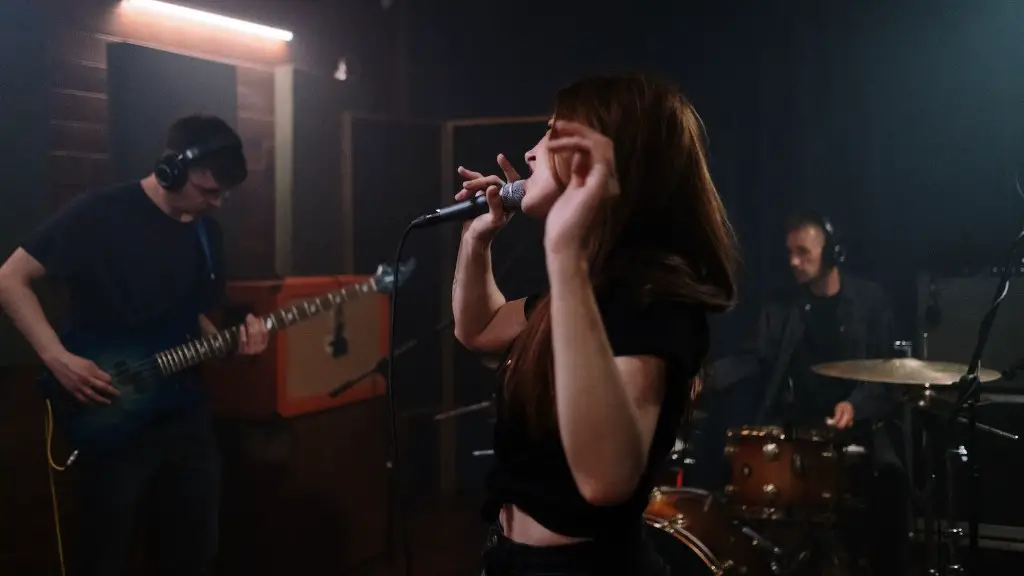Creating art of all kinds can be so enriching and rewarding. Whether you’re an artist, a music lover or just need a quick break from everyday life, drawing a microphone can be a great way to feel inspired. With just a few simple steps and a few materials, you can draw a realistic-looking microphone in no time.
Before you start, gather your supplies: pencil, eraser, paper and a reference image of a microphone. It’s also helpful to have a ruler and pencil sharpener on hand. To begin, take your pencil and sketch out an outline of the microphone in the center of your paper. Take your ruler and make sure to even out the sides, making the outline of the microphone symmetrical. Once the outline is complete, use the same ruler to draw a thin vertical line from the top of the microphone to the bottom. This will help you get a perspective of the microphone as you draw.
Now, it’s time to focus on the details. At the top of the microphone, draw two small circles for the buttons or knobs. Depending on the type of microphone you’re drawing, it could have just one button or many. Next, draw out the grille at the top part of the microphone, like a ribbed pattern. To make it look realistic, vary the size and shape of the ribs. Finally, draw a line in the middle of the microphone that separates the two different sides. This helps give the microphone more dimension.
At this point, step back and take a look at your drawing. If you have a reference image of a microphone, compare your artwork with it to make sure it looks proportionate. Use your eraser to make any adjustments to the outline of the microphone, taking care to keep each side symmetrical. Now, pick up your pencil and use shading to add texture and realism to the microphone. Emphasize the grille and shade around the buttons to give more depth. Take a moment to appreciate all the hard work you’ve put into your artwork, and you’ll soon be the envy of any artist.
Creating art is an important way to take a break from reality and explore your creativity. It’s a great activity for all ages and doesn’t require too much time or money. With some paper, pencils, and a few basic art supplies, you can easily draw a lifelike microphone. Be sure to experiment with the shading it and adjust the proportions to get the perfect look. Who knows, you may be an expert artist in no time.
It may seem intimidating to draw a microphone at first, but with the right tools and reference image, it can be quite simple. Start by sketching the outline of the microphone and use your ruler to even out the sides. Add small details such as buttons at the top, as well as a grille, to make it look realistic. Step back to make sure the proportions are correct and adjust with the eraser if necessary. Then, use shading to help bring your artwork to life. With practice, you’ll be able to draw lifelike microphones in no time.
Drawing a microphone isn’t only a great way to take a break from reality, it’s also a great way to learn perspective, shape, and how to use light and shadow to your advantage. Gather your supplies and a reference image and start your journey as an artist. With patience and a few simple techniques, you’ll soon be the envy of any artist.
If you want to draw a microphone, the first step is to gather all the essentials and a reference photo. Then, use your ruler to draw an even outline of the mic and add small details such as buttons or a grille. Vary the size and shape of the ribs on the grille, and draw a line in the middle to give the mic more dimension. Step back to evaluate the proportions, and use shading and erasing to add texture and realism. Take a break to appreciate your work, and soon you’ll be creating lifelike mics in no time.
Drawing a microphone can be made much easier with some practice and helpful advice. When setting out to draw one, being prepared is key. Collect all the essential materials and a reference image, then draw an even outline of the mic, using a ruler to make sure the proportions are correct. Add small details such as buttons or a grille and draw a line in the middle to give the mic more dimension. After shading, erasing, and adjusting the proportions, you will have yourself a lifelike mic in no time.
Drawing a microphone is a great way to explore your creative side. Gather your supplies and a reference image, then sketch out an even outline using a ruler. Make sure to adjust the proportions with your eraser if necessary. Add small details such as buttons and a grille, and use shading to make it look realistic. Finally, take a moment to appreciate the artwork you’ve created and step back to evaluate the proportions one last time. With practice, you’ll become a master artist in no time.
